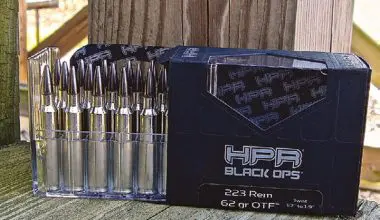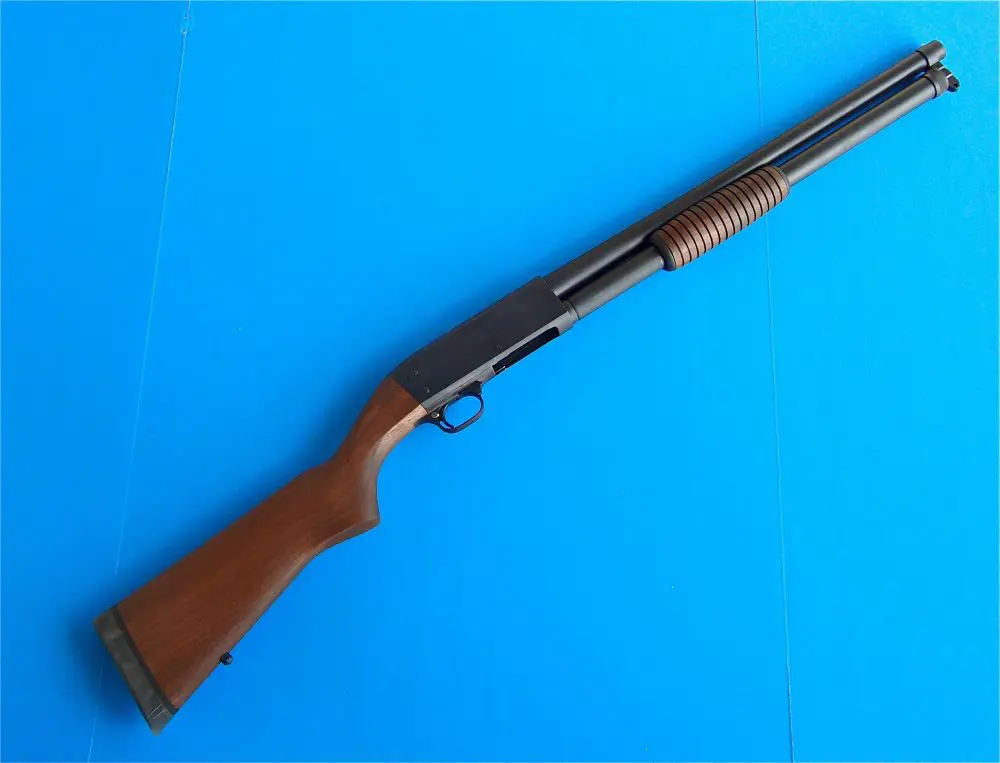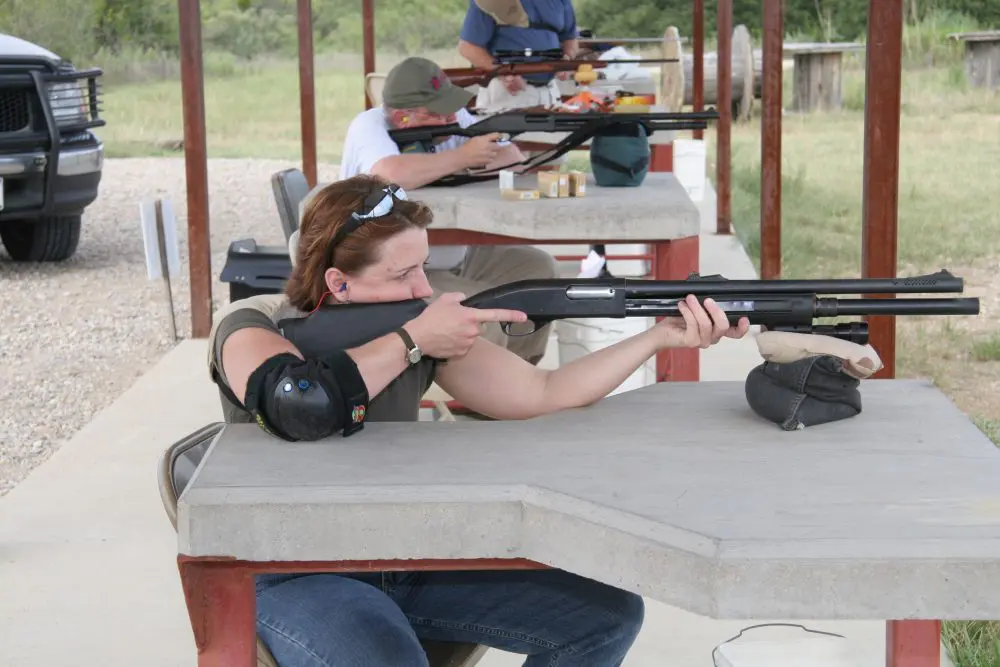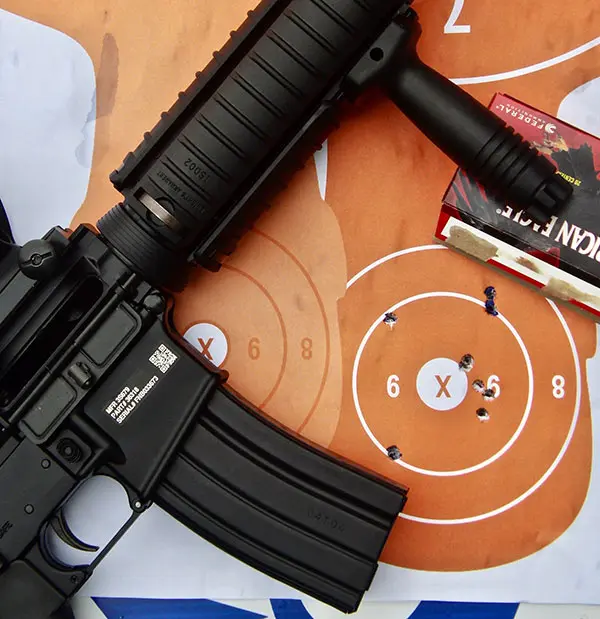Switzerland’s practice of maintaining a citizen army based on individual riflemen has provided the impetus for a string of excellent rifles. Currently, the Stgw 90 (SIG 550) serves as the Swiss issue battle rifle. In my opinion, this is the best 5.56x45mm caliber rifle in the world, and many agree.
However, due to the way the Swiss reserve system works, until they are discharged, troops continue to use the weapon they were issued upon taking their basic training. At that point they can pay to have the rifle converted to semiautomatic and retain it.
Although the bulk of Swiss soldiers are now armed with the Stgw 90, as of a couple of years ago, over 2,000 of its predecessor—the Stgw 57—remained in service with older soldiers.

A Swiss friend told me that at some point after the Stgw 90 was adopted, those still retaining the Stgw 57 had the option of trading it in for the newer rifle, but I can’t confirm that.
Many probably kept their Stgw 57s out of preference even though it is longer and heavier. Older troops tend to be assigned to static units, so they would not have to carry the Stgw 57 too much. It also shoots farther and hits harder. It would be equivalent to keeping the M14 over the M16 when it was adopted.
Chambered for the 7.5x55mm Swiss cartridge, the Stgw 57 has longer range and more striking power—an advantage for those troops assigned to fortress defense, as older reservists traditionally have been.
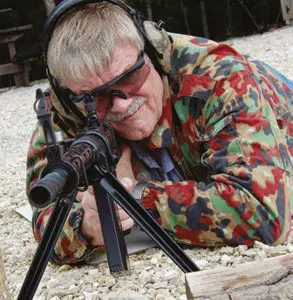
Part of Swiss continuation training has always been rifle matches. For the Stgw 57, standard service-issue GP11 ammunition is used, but the quality is high enough that it has proven of “match quality.” For the Stgw 90, GP90 service ammo is also quite accurate. For this column, I am most interested in the Stgw 57 and its ammo.
The Stgw 57 is a good-sized rifle— 43.3 inches overall with a 23-inch barrel and weighing 12.6 pounds. A good sling has always been necessary for the Stgw 57, and Swiss troops generally slung it across the back for climbing or riding bicycles to battle. On full-auto, the rifle would run at about 500 RPM. But good balance, a well-designed stock that incorporates a recoil buffer, integral muzzle brake, and weight made it quite controllable on bursts.
A roller-delayed blowback action was used that in my experience worked quite reliably. Many sheet metal components were used in the Stgw 57 to speed production, but this is still a Swiss rifle, so quality is excellent. A feature I always liked is the cocking handle, which retains the barrel-shaped handle used on the bolt of the straight pull K31 that the Stgw 57 replaced. By the way, the same 7.5x55mm round was retained, since older reservists at the time of the Stgw 57’s introduction were still using the K31.
Magazine capacity for the Stgw 57 is 24 rounds in a detachable box magazine. The sights are of flip-up type to protect them when moving with the rifle and are very good. Because of the rifle’s straight-line design, the sights have to be rather tall. The rear peep is adjustable from 100 meters to 640 meters and is quite precise. Just as the sights of the Stgw 90 allow much better accuracy than typical battle rifle sights, so do those of the Stgw 57.

Many readers will know that Swiss reservists traditionally have kept their rifle and an emergency supply of ammo at home to allow them to fight to their assembly point. For the Stgw 57, this was a sealed tin holding 24 rounds. I understand from Swiss contacts that recently the practice of keeping sealed tins of ammo at home has been discontinued. Nevertheless, there is always ammo available for purchase at ranges or gun shops.
From the first time I picked up and handled a SIG 541 when it was being tested by a Swiss unit in which I had contacts, I was enamored with it. This rifle would evolve into the SIG 550 and Stgw 90, still my favorite assault rifle in 5.56x45mm caliber. I also have had a chance to handle and shoot the Stgw 57 a few times. I liked it too, though by the time I first saw one, it was already “vintage”— but vintage like a fine muscle car. The last time I fired an Stgw military rifle was probably 25 years ago, but I’ve always remembered it.
SIG also made a semi-auto version of the Stgw 57 for sale in the United States. Designated the PE57, other than being a semi-auto, it is virtually identical to the Swiss military version. So few were imported into the States that prices have always been high on the PE57.
A couple of years ago, a friend of mine was charged with selling off the gun collection of his uncle, who had collected semi-auto assault rifles when they were first imported and before the various import bans. Included were a PE57 and a few hundred rounds of 7.5x55mm ammo. The price initially being asked was higher than I was willing to pay, so I made an offer should the rifle not sell.
As it transpired, the rifle did not sell. The price was at the top end of what examples had been bringing, and it is rather esoteric. As the date approached for wrapping up the sale of everything in the collection, my friend came back to me with a counter offer that wasn’t too much over what I had offered. I purchased the PE57—and I’m glad I did.
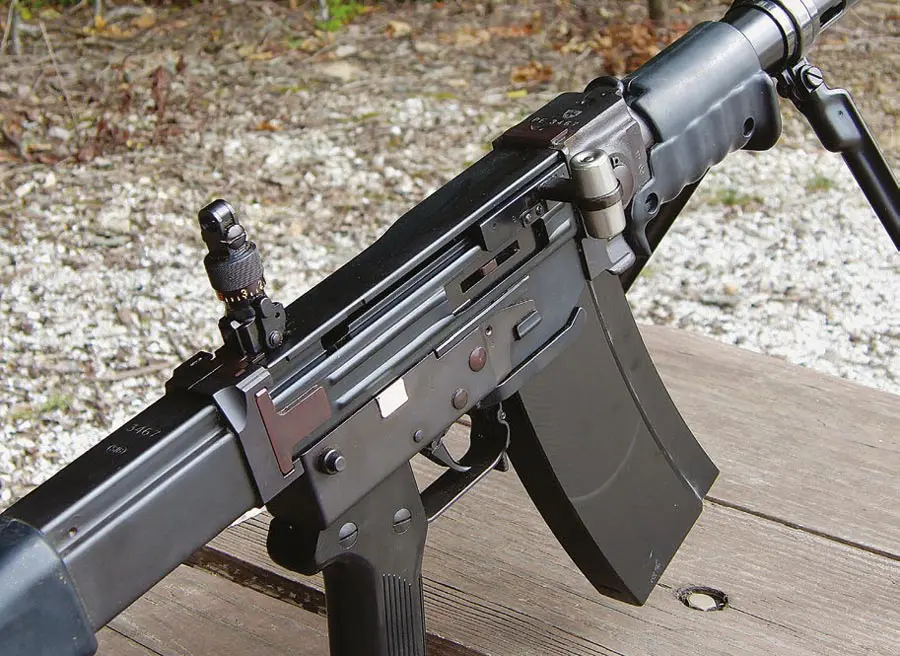
I’d been meaning to take it out to shoot, so this column gave me a good excuse. As should be expected with a Swiss rifle, many features make the PE57 quite shootable. It incorporates a bipod, since the PE57 is heavy to shoot offhand. Also the buttstock and handguard are rubberized, making the rifle more comfortable to shoot.
Switzerland is mountainous and can be quite cold, so the PE57 incorporates a winter trigger, which folds down to allow use wearing mittens or gloves— another excellent feature. I’ve fired the Stgw 57 and PE57 using the winter trigger, and the extra leverage allows a very smooth let-off.
On the negative side, the safety is not well located for ease of operation. It is on the left side of the receiver, hence the shooting hand must either be removed from the pistol grip to operate the safety or the support hand must be used.
I found when shooting that the standard trigger’s pull was pretty good. I did some firing offhand and, though heavy, the PE57 balanced well. I also fired it off the bipod using a standing rest and prone.
I had Swiss military ammo from 1962 that still performed reliably and gave good accuracy. A friend shooting with me shot the best group of 1.5 inches at 100 yards. My groups were more in the three- to four-inch range, but I’ve been so spoiled by optical sights that I was satisfied with that from the PE57’s iron sights—very good iron sights, but still iron sights.
Mag changes were easy due to the paddle magazine release, but the rifle was heavy enough that I had to brace it under my arm when using my support hand to do changes. I fired 70 rounds in one session and another 40 in a second one using three different magazines. Reliability was 100%.
The PE57 and its military version, the Stgw rifle, were designed to reach out across Swiss mountain valleys and eliminate an enemy with a precise shot. As with every Swiss weapon I’ve shot, it is built with precision and attention to detail. It is designed for infantrymen who know their weapons and how to shoot them well. The fact that my PE57 is a semi-auto doesn’t alter its effectiveness, since it is designed primarily to be used for precisely placed shots. And it does that well.
I put the PE57 in the same class as a SIG P210 or a Rolex watch—expensive, well made, and highly desirable. I like them all. Fortunately for me, the Swiss never made a sports car!
